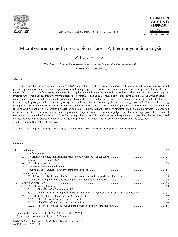摘要
Superhydrophobic surfaces with a contact angle (CA) larger than 150 degrees have recently attracted great interest in both academic research and practical applications due to their water-repellent or self-cleaning properties. However, thermodynamic mechanisms responsible for the effects of various factors such as surface geometry and chemistry, liquids, and environmental sources have not been well understood. In this study, a pillar microtexture, which has been intensively investigated in experiments, is chosen as a typical example and thermodynamically analyzed in detail. To gain a comprehensive insight into superhydrophobic behavior, the roles of pillar height, width and spacing (or roughness and solid fraction), intrinsic CA, drop size, and vibrational energy are systematically investigated. Free energy (FE) and free energy barrier (FEB) are calculated using a simple and robust model. Based on the calculations of FE and FEB, various CAs, including apparent, equilibrium (stable), advancing and receding CAs, and contact angle hysteresis (CAH) can be determined. Especially, the design of practical superhydrophobic surfaces is emphasized in connection with the transition between noncomposite and composite states; a criterion for judging such transition is proposed. The theoretical results are consistent with the Wenzel's and the Cassie's equations for equilibrium CA values and experimental observations. Furthermore, based on these results and the proposed criterion, some general principles to achieve superhydrophobic performance are suggested.
- 出版日期2007-4-28
